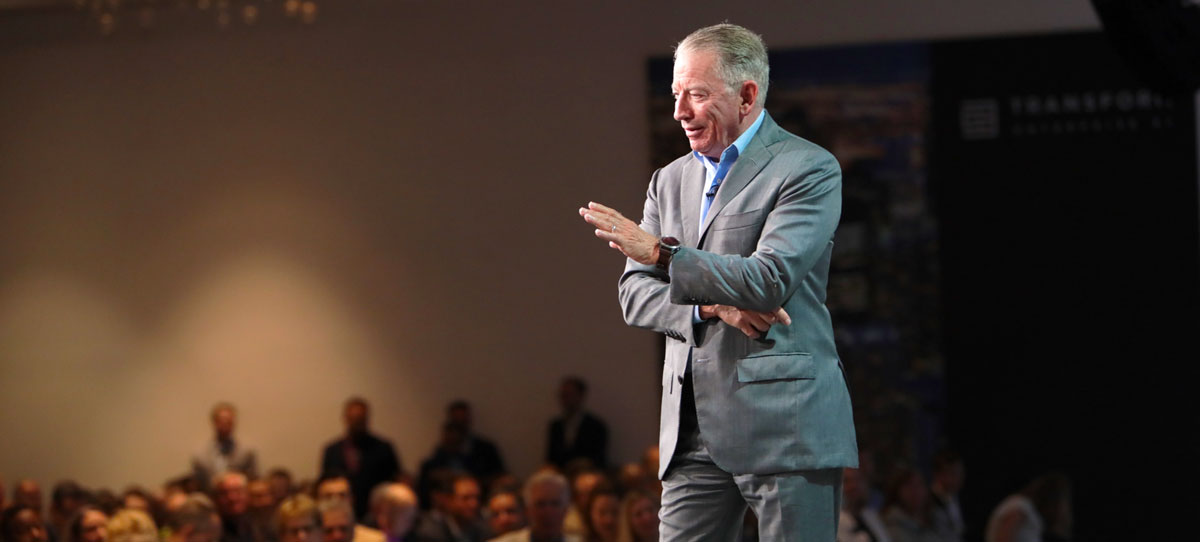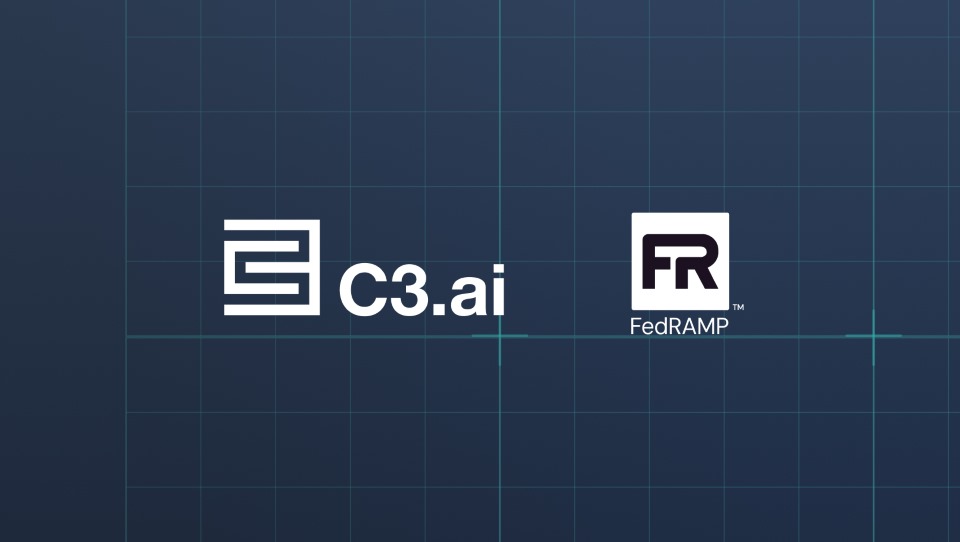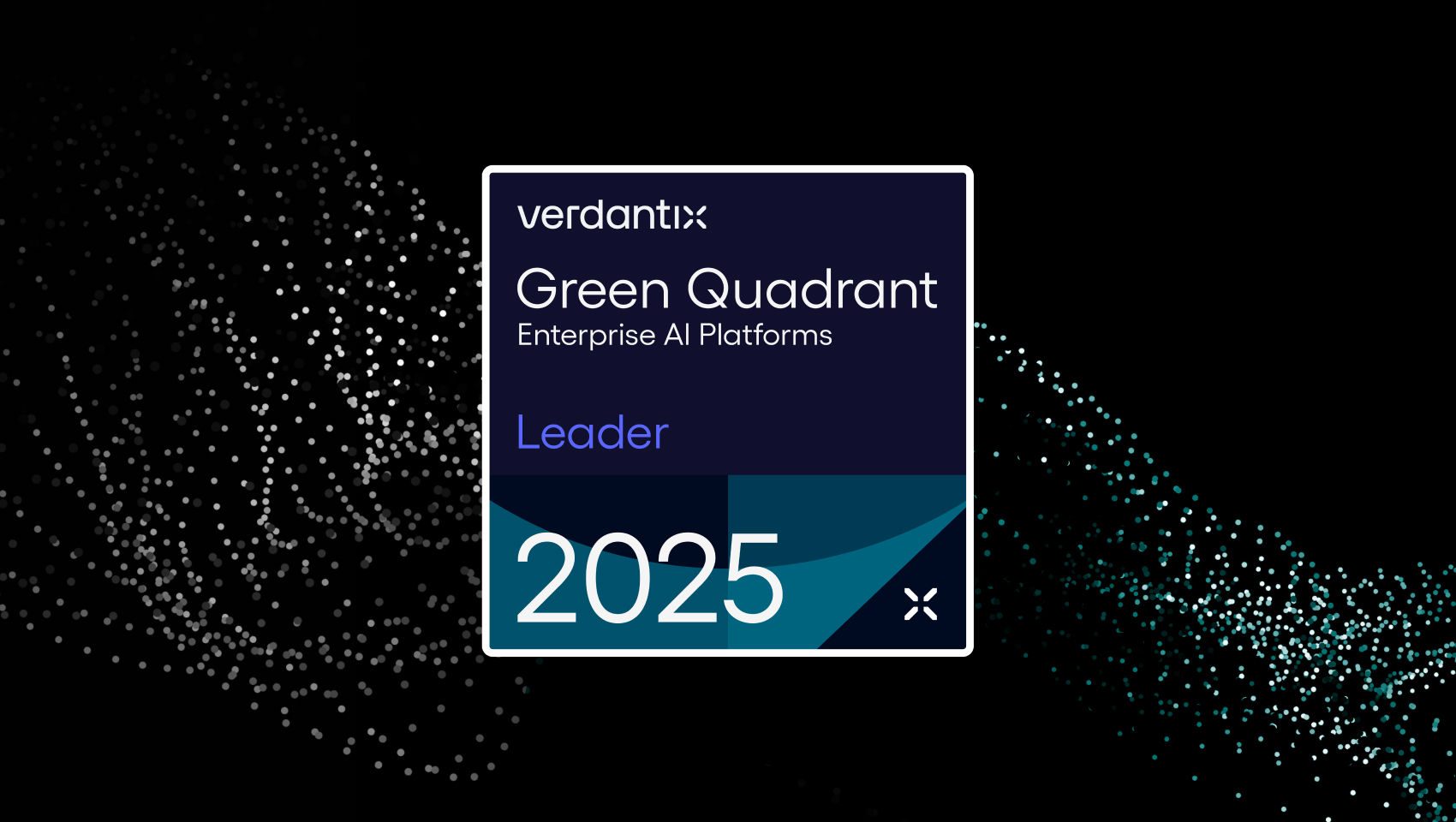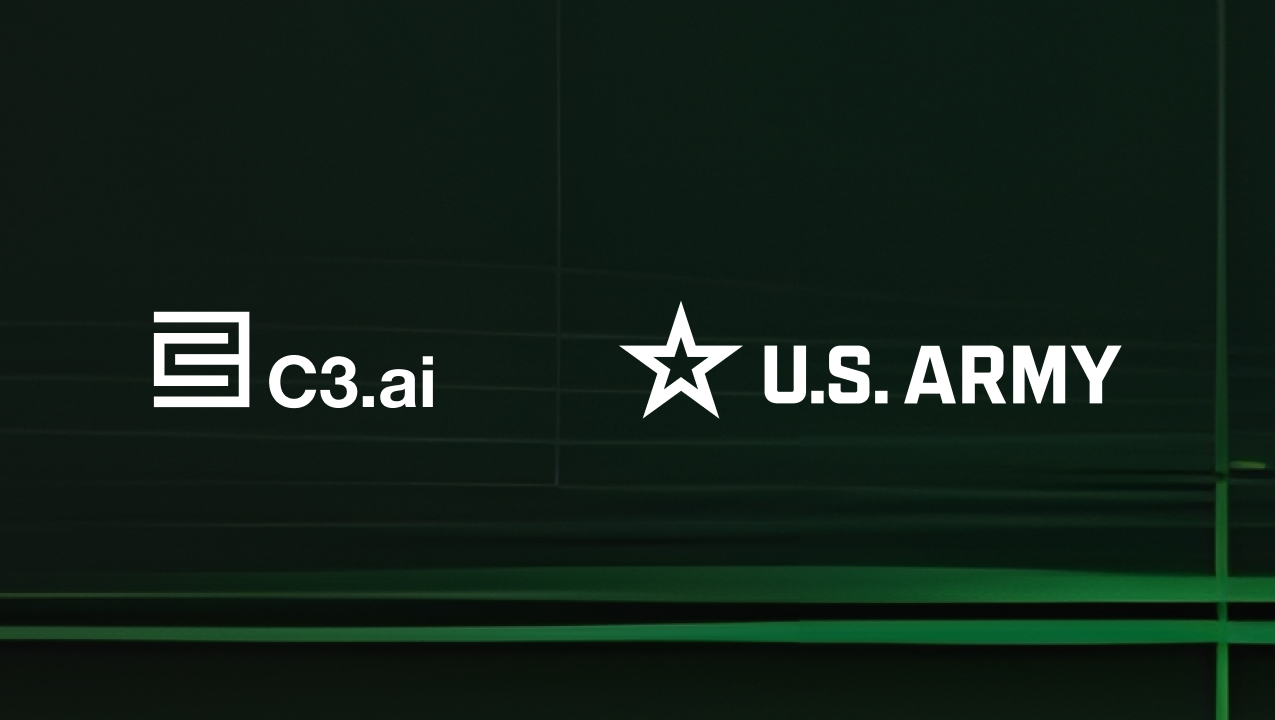I had a couple questions I had wanted to ask Tom Siebel ever since his company, C3.ai (ticker “AI”) went public in December of 2020.
When I finally get my chance, I have to wait a moment, because Siebel is irrepressible. He often has the advantage on a reporter, leading with a kind of gusto that eclipses the standard question and answer protocol.
“I had an epiphany this week,” Siebel tells me, over a Greek coffee at a Greek joint in midtown Manhattan, Friday afternoon. Siebel, in the course of meeting with investors in New York and Boston this week, including Fidelity, has had reason to crystallize his thoughts about what artificial intelligence means, at least for his company and his customers.
It is a good time to go on the road. At a recent stock price of $24.24, C3.ai shares are down sixty-five percent in the past year, twenty-two percent this year, and seventy-four percent since the IPO. And the entire software market is somewhat in the toilet as valuations are revised across the board.
The epiphany that Siebel has had this week is about where artificial intelligence “fits in the enterprise,” as he puts it. Siebel is a four-decade veteran of enterprise software, so he is focused on how companies are going to use this stuff more to extract practical value.
“It’s a much simpler idea” than most people think, he tells me of AI, “it’s not pixie dust,” although, “it took me until this week to get this straight,” he confesses.
When Siebel was at database giant Oracle, in the late eighties and nineties, he recalls, the game plan was a database on top of which were constructed numerous tools, from simple reporting to applications such as ERP, “enterprise resource planning,” which manages supply chain and such; and CRM, “customer relationship management.”
“What did these applications let us do?” he asks, rhetorically. “They allowed us to say, a hundred and eighty days later, what our inventory was of ball bearings and computer chips, to seven sevens,” meaning, many levels of precision. “Now, when we apply AI to these applications, it doesn’t tell us how many we parts we had, it tells us how much we need.”
Where once it was entirely backward-looking, an enterprise can become a predictive entity. Where once database reports told one what customer churn had been in a quarter, henceforth, using AI, it will predict which customers are going to leave (and, therefore, which customers need special attention, obviously.)
Software used to tell an airline how much downtime their fleet had had, explains Siebel. Now, software can use telemetry data hooked up to sensors on the jet to do predictive maintenance and thereby increase the availability of aircraft by fifty percent.
“Think of the power grid,” he offers. “Historically, software in the power grid would tell you the failure rate of parts; now, we can look, in real time, and identify the transformer in Rome one hundred and eighty days before it fails.”
That is the basic paradigm of AI, as far as Siebel is concerned: It makes predictions. The first forty years of enterprise software, if you will, from the founding of Oracle, his first employer, in the 1970s, to roughly the Naughts, was about looking back. The new apps, driven by instant availability of data and vast computing power, is about looking forward.
“The same applications, the same use cases; they were one hundred percent retrospective, and now they’re prospective,” is how he puts it.
Why this epiphany is important is because investors “don’t always know what it is that we do,” says Siebel, referring to C3’s business. He has high regard for the buy-side’s intellect and acumen, but he sees C3 competing for attention with numerous young software companies, where C3’s distinct value can be unclear. “We’re not Data Bricks, we’re not Snowflake, we’re not Alteryx,” says Siebel, listing one private company and two public ones. None of those companies are as focused on predictions with immediate impact, he suggests.
The benefits, he tells me, of prediction can be very large, things such as jet fighters with more uptime because failure has been averted. “Fifty percent more availability? That’s a big freaking deal,” says Siebel, using one his favorite term of emphasis.
“Some of my customers are getting billions in economic value” from what C3 has done, he says. “An oil rig has a value of seventy-five million dollars a day,” he explains. “If you can predict the value of a transformer failing on a rig, and keep it from going out of service for a month, what’s the value of that?” Thirty times seventy-five is two and a quarter billion dollars.
Healthcare, too. AI-assisted medicine will tell not simply who has gotten sick but predict illness. “The population in years to come is going to be largely wired,” says Siebel, placing his index finger on his wrist as if to suggest a sub-dermal sensor, “things under the skin, all that,” acting as sensor networks that give real-time data about patients. “People will live longer, and health care will be cheaper” as a result.
In total, enterprise may be a six-hundred billion-dollar market, he says, of enterprise AI, citing figures from market research firm IDC. Such market research figures are notoriously hot air, I point out. “Okay,” he nods, “it’s big; it’s bigger than a breadbox.”

Tom Siebel at C3 Transform 2022
The idea that software moves from historical reporting to prediction via AI is straightforward, so why did it take Siebel so long to come to this epiphany? C3 has been in business since 2009, and Siebel, who is the founder, has been CEO since 2011.
He shrugs. “Everyone is so confused about this AI thing,” says Siebel. What’s important is that he knows the enterprise software market.
“I know something about CRM [customer relationship management] because I invented it,” with his prior company, Siebel Systems, which he sold in 2006 to Oracle for almost six billion dollars.
AI will be the renovation of CRM, among other things, says Siebel. “We can use AI to tell the company which deals are going to close, yes, but also which products to make,” he says. The prospect that Siebel will “re-invent” a category where he was successful before, CRM, is especially appealing to the Street, which loves repetition.
I observe that the idea of AI as prediction may be profound, but it’s also very general. Why is C3 particularly well-suited to exploit this idea?
“We are actually the only company in the world that does this successfully,” says Siebel. Siebel’s goal is for C3 to occupy the “top decile” of software firms. “Our goal is to establish and maintain market leadership” in making those predictions.
“We have spent a billion dollars over a decade building an app development platform, an environment that makes everything that is necessary for any enterprise app to do this,” says Siebel, referring to the company’s underlying cloud-based software technology, currently offered through Amazon’s AWS, Microsoft’s Azure, and Google’s GCP.
Siebel has made his main pitch, and leans back, satisfied. I sense my opportunity to ask the two questions I have been waiting to ask since C3 went public.
First, what the company does is not, to my mind, “AI.” I have spent some time reporting on AI — years now, in fact. There is a lot of hyperbole these days, and every company is an “AI company,” at least in its press releases. Which makes me suspicious. When you have a ticker symbol that’s “AI,” it makes me more suspcious.
AI, to my mind, involves breakthroughs at the edge of computer science. In contrast, I point out to Siebel, my dissection of C3’s software, based on its public statements, and its patent portfolio, leads me to think that the company’s technology is really something more prosaic, a well-established corner of cloud computing known as “platform-as-a-service.” PaaS, as it’s often called, is a collection of software development tools offered up via the cloud that help companies construct applications more efficiently. My interview with C3’s CTO, Ed Abbo, reinforced that impression.
That’s valuable, I concede, but it doesn’t sound like AI.
Siebel listens patiently to the argument, pauses, and says, in a deliberate, measured tone, “We are a platform-as-a-service company that lets companies deploy AI.” That means a couple things, says Siebel. One, the company helps customers to integrate data. “The fact we can do that is pretty damn useful, but there’s no AI in that,” he concedes.
But another part does have AI, he says, the analysis part, the predictions. That has some of what’s called machine learning, which is a form of AI. Siebel wishes to qualify that, however. “We are doing supervised and unsupervised learning, we are not doing deep learning,” he says, referring to the most cutting-edge forms of AI.
Technically speaking, that distinction isn’t correct. Deep learning uses both supervised and unsupervised forms of machine learning. What Siebel is saying is that C3 steers away from the most exotic forms of AI such as deep learning, using simpler approaches, decades-old approaches at the intersection of statistics and AI, things such as “gradient boosting” and “support vector machines.”
“Why are we not doing deep learning?” asks Siebel rhetorically. “Because most people want an explanation.”
Deep learning forms of AI are notorious for being a black box, as Siebel well knows. His customers want a prediction that is clear, that they can act on, not just a vague probability without explanation.
If a compressor, say, is going to fail in a multi-million-dollar piece of industrial equipment, there are seven hundred distinct signals that, in some combination, could predict that failure. Siebel’s customers don’t want to be told a prediction is the result of advanced computer science. What they want, he says, is to know exactly which of those seven hundred signals are predicting failure.
“They want a freaking evidence package,” he says, the list of reasons. In other words, predictions cannot be a fishing expedition, they must be precise, and based on known mechanisms. Deep learning is a bit too outré for that, older machine learning is sufficient.
The second question I had back at the IPO was whether C3 is a consulting company. The very large projects, with large customers who are also partners, such as energy giant Baker Hughes, seemed, from what I could tell, to be things involving a lot of work to set up and maintain in collaboration with the client. A lot of hand holding. That matters because consulting firms have very different economics than software firms. It takes more staffing to roll out new projects for a consulting shop, which can weigh down profit margin and slow growth.
“My concern is you might be like some other companies out there that I deem to be really consulting firms in disguise,” I say.
“Are we Palantir?” is Siebel’s reply. He has anticipated my thoughts exactly. Palantir, the shadowy military-industrial Big Data firm, seems, as far as one can tell, the quintessential government consulting outfit.
No, he says. “Unlike Palantir, we clearly distinguish professional services from software.” There is a lot of labor involved, he concedes, to use the tools that C3 offers customers. “But I’m not doing that labor, my customer is doing that labor,” he says. C3 will send in consultants, yes. Professional services is almost a fifth of revenue. But the focus is really to get things going in the right direction for the client, not to constantly spend man-hours building things, he says.
The Street, I tell Siebel, based on my canvassing of the sell-side, has a myriad of other questions. The company has a plethora of partnerships, with Amazon, Microsoft, Baker Hughes, Fiserv, and, most recently, Google. Where is the most activity with those partners?
Siebel lights up at the discussion of partnerships. He likes for C3 to be at the center of a flurry of activity. A hundred percent of business was brought in via partners last quarter, he notes. Each of them contributes something meaningful. Microsoft has been responsible for two hundred million in revenue to date, he notes. “The one that is really leaning in, is Google,” he notes. Google Cloud’s CEO, Thomas Kurian, was the headline speaker a week ago at C3’s annual customer conference, in Miami. “Google is leaning in really hard,” says Siebel.
One of the big questions about those partnerships, I have always maintained, is how much customer concentration there is. Baker Hughes, traditionally C3’s biggest customer, is also a partner. In the quarterly filings, Baker’s committed revenue for this year is seventy-five million dollars, and for next year, one hundred and twenty-five million. Compared to Street consensus estimates, it would appear Baker is a third to forty percent of projected revenue.
“That’s not all revenue from Baker,” Siebel corrects me. Most of that committed revenue is what Baker Hughes is bringing to C3 from other companies in the energy field, companies such as Shell and Koch and Lyondell.
Another question is the company’s software program called “Ex Machina,” which is supposed to dramatically simplify the work of putting together machine learning for those with less-technical skills. A year ago, it seemed Siebel was talking a lot more about the benefits of that software in order to go “down-market,” to sell more software not only to giants such as Shell, but to small and medium-sized businesses. Siebel hasn’t mentioned the program as much lately. Has it failed? some wonder.
Siebel is incredulous at the question. There’s nothing wrong with Ex Machina, but it is not the key to going down-market, he says. “We have probably twenty customers using it out of a total customer base of two hundred and eighteen. “We expect it to be large and successful, but Ex Machina is not the only thing,” says Siebel. He tells me to look at the customer “distribution.” I pull out the conference call transcript.
There, in prepared remarks, is the description of how the company’s deals in the quarter span different deal sizes. “During the quarter, we executed 12 agreements less than $1 million, three contracts between $1 million and $5 million, two transactions between $5 million and $10 million, and three agreements in the range of $10 million to $50 million.”
“There you go,” Siebel says with satisfaction. While not equivalent to customer size, the deal distribution, in his mind, points to how C3 is able to sell across a spectrum of customer appetite, which is good enough.
Analysts also ask about the sales team re-orientation at the end of last year. Siebel has been careful to point out that it was not a “restructuring,” it was a change in methodology. What is that change? I ask.
“You had a situation where you have a person running sales, and they’re basically beating their team to death” to close deals, says Siebel. “That’s not the way to go.”
Instead, “it’s really about building a team.” Siebel is fond of business diagrams. He takes out his ReMarkable electronic ink tablet, which he uses conatantly. He draws a circle, the customer. Around the customer, team members from Siebel, and partners, are drawn as circles, like planets of a solar system. “We put together a team on the account, with people in all the areas of focus, areas of expertise, to take them all the way through to success.
“That’s the way you get results, not by beating people.”
One of the worrying corporate developments for the Street is turnover. The company has had four CFOs in just two years. The most recent one, Adeel Manzoor, left after just a quarter, being replaced by acting CFO Juho Parkkinen. “It’s true,” says Siebel, unimpressed with the question. “And Tesla has had the same number of CFOs.” He notes that The Great Resignation is real. “In February, one third of the workforce in the U.S. changed jobs,” according to data he’s seen. “One third!” Case closed, as far as Siebel is concerned.
The last question from the sell-side is the cash. The IPO in 2020 was very big, netting the company six hundred million dollars. Combined with existing assets, and cash flow, C3 now has almost a billion dollars on the balance sheet. How will Siebel spend that? the Street would like to know.
“How are we going to deploy it? We’re going to deploy it in growth, in technology leadership, and market leadership, and in partnerships,” he says.
Such cash could also be useful to weather a suddenly rough stock market. Software stocks are, again, particularly weak. The average return of a hundred or so software names I regularly track is a decline of fifteen percent this year, and a decline of five percent in the past twelve months, compared to The Nasdaq Composite’s negative seven percent and positive eight percent, respectively.
“I believe that the market was way overdue for a correction,” says Siebel. “A lot of it had to do with monetary policy,” he remarks, vaguely. “This is what markets do.”
“A lot of AI companies are going to go out of business,” he reflects, many starved for cash. With C3’s balance sheet, “there’s no question on any one’s mind that we are a going concern.” Nor is there any need to raise money any time soon. “The stock market could shut down for five years, and we would be just fine.”
Is the stock a good buy? At $24.24 a share, the company has a market value of about three billion dollars. Siebel directs me to take the almost one billion in cash on the balance sheet and subtract it, to get enterprise value of roughly two billion. Compared to the company’s expected $334 million in revenue next fiscal year, the year ending April of 2023, which is the FactSet consensus, C3 has an enterprise value-to-sales ratio of six times.
“Most companies having [sales] growth north of thirty percent would have an enterprise value-to-sales of twenty to thirty times,” observes Siebel.
“Yes, the value of the company is undervalued,” he says.
“Here’s the story,” he says. “We have a quarter-billion in revenue [this fiscal year]; we are growing at thirty percent or better; our customer count has been growing by ninety percent; and we have a clear path to profitability.”
The gross profit margin today for C3 is quite handsome, eighty percent, as of the latest quarter, on a non-GAAP basis. However, Siebel is spending the equivalent of eighty-eight percent, combined, on R&D and selling and marketing, split roughly evenly between the two, producing an operating loss.
“As we get to a billion dollars in revenue, we will naturally see the expense side decline,” he says. “We will be better than the Rule of 40,” he says, the modern jargon for a firm that has a combination of, say, twenty percent per annum sales growth, and twenty percent free cash flow margins.
Siebel, who has been leaning in to drive home this financial playbook, sits back in his chair, fairly satisfied.
“If we succeed, we will be one of the world’s greatest software companies,” he says.
“Even if we fail, we will be a gigantic software company.”



